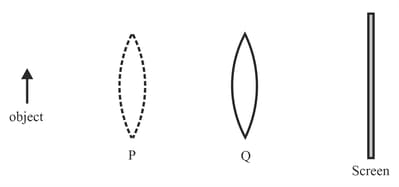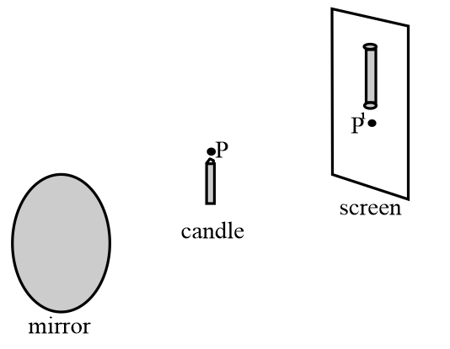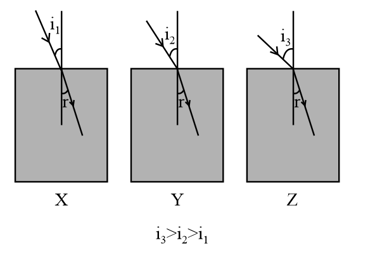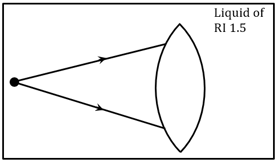Two convex lenses P and Q have focal length and respectively. Which of the following is TRUE about the combined power of the two lenses?

Important Questions on Light - Reflection and Refraction
When a lens in placed at Q, a sharp image is formed on the screen. The image formed is real, inverted and diminished. When the lens is moved to P, another sharp image is formed on the screen.

What is the nature of the image formed when the lens is at P?
The diagram below shows the image of a candle, as formed through refection from a concave mirror, obtained on a screen.

How many light rays from the point P on the candle flame can be drawn to the corresponding point on the image P'?
The images formed by an ordinary convex lens suffer from a defect, called chromatic defect, which leads to false coloured edges in the images. This happens because light rays of different colours bend differently as they enter and leave the lens.
If a parallel white light beam passes through a convex lens, the light of which colour (among violet to red in the spectrum) will converge at a point closest to the lens? Justify your answer.
A lens made of material with a refractive index is immersed in a liquid with a refractive index . The diagram below shows two rays incident on the lens when it is immersed in the liquid.
Copy the diagram and draw the light rays after they pass through the lens. Justify your diagram.
The image below shows the refraction of light in three transparent rectangular blocks, X, Y and Z, made of different materials when they are placed in air. The angle of incidence is different in each case but the angle of refraction is the same in all three blocks.

Compare the speed of light in the three blocks. Justify your answer.

